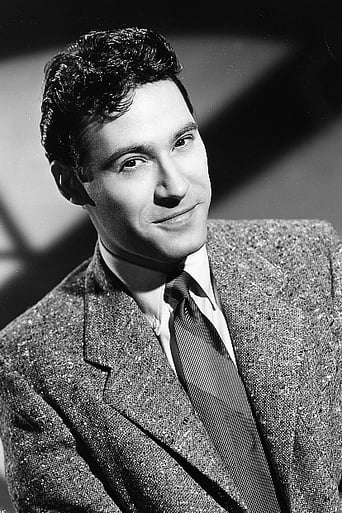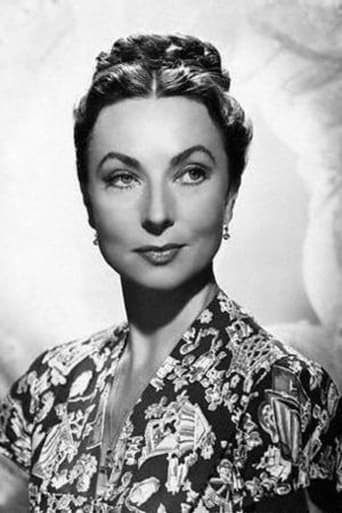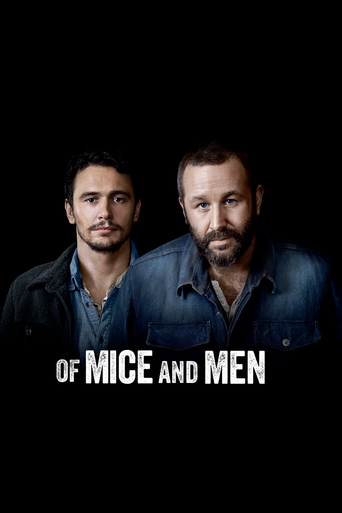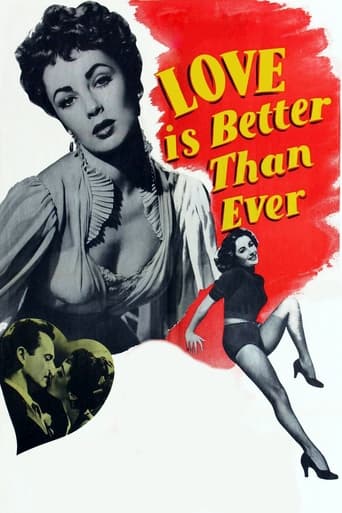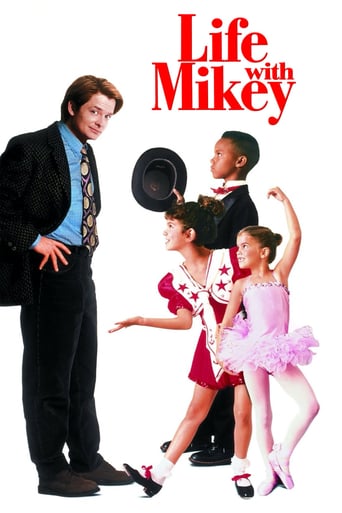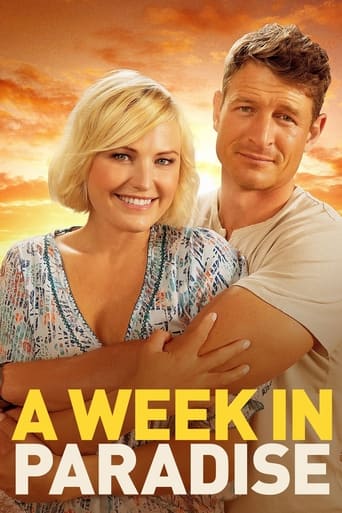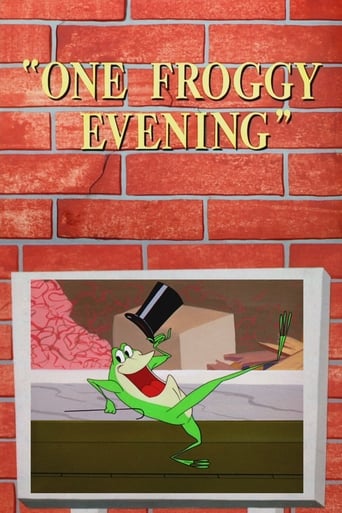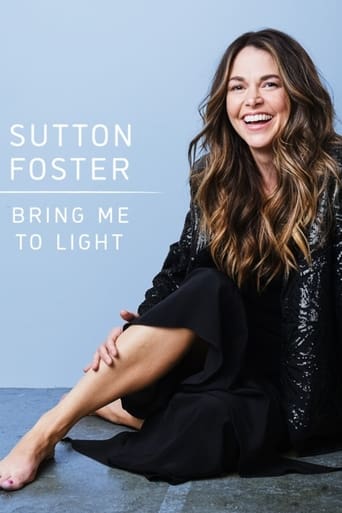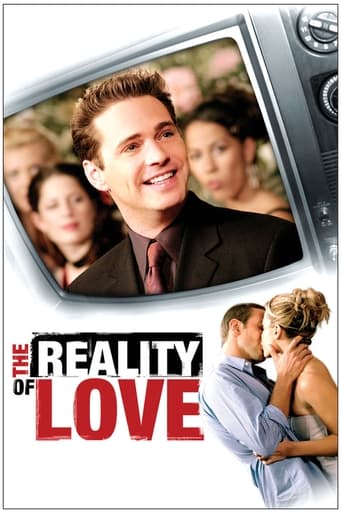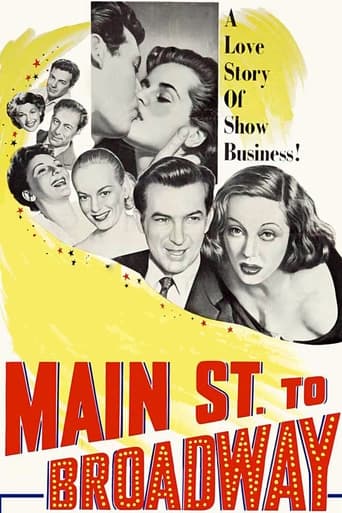
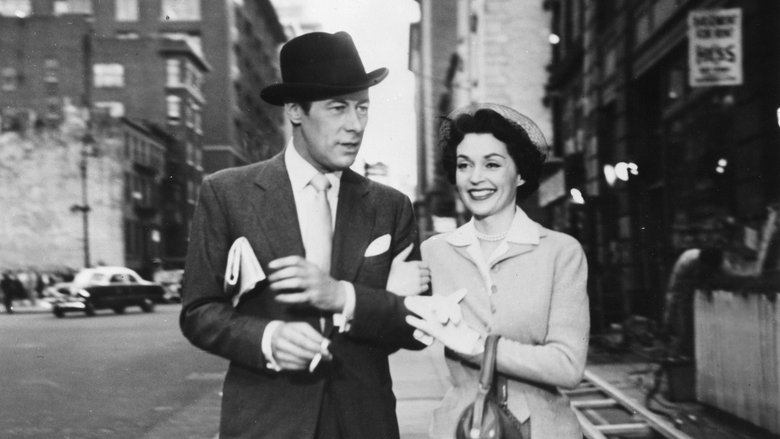
Main Street to Broadway (1953)
In New York, a surly, down-on-his-heels playwright meets a country girl who's giving up trying to act and returning home. He goes with her for inspiration when his agent convinces a stage star to take his next effort. When he returns to Broadway, his girl stays behind and starts seeing a local businessman.
Watch Trailer
Cast
Similar titles
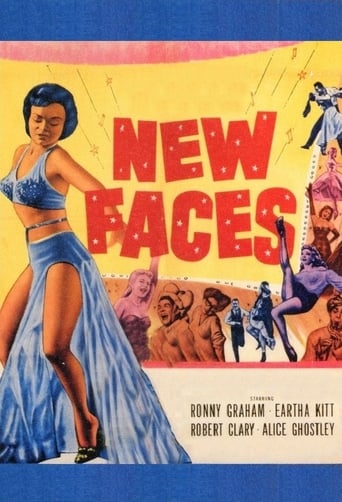

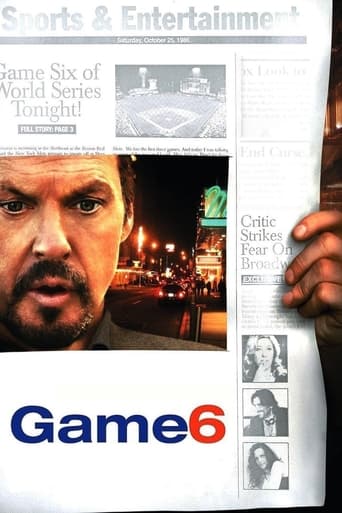
Reviews
Very Cool!!!
Fantastic!
This is a dark and sometimes deeply uncomfortable drama
It is encouraging that the film ends so strongly.Otherwise, it wouldn't have been a particularly memorable film
Producer: Lester Cowan. Copyright 15 June 1953 by Cinema Productions, Inc. Produced by Lester Cowan Productions with the aid of the Council for the Living Theatre. U.S. release through Loew's Metro-Goldwyn-Mayer pictures: 31 July 1953. New York opening at the Astor: 13 October 1953. U.K. release through Exclusive: 11 January 1957. Never theatrically released in Australia. 101 minutes.COMMENT: Main Street to Broadway has certainly had a checkered history. Made and released in the U.S.A. in 1953, it was not released in England until 1957 and did not appear in Australia until 1972 when it was premiered unobtrusively and without fanfare on TV. The version released in Oz was the cut U.K. 78-minute version which deletes Helen Hayes and Henry Fonda. It's odd that the film has suffered this neglect for it has a formidable cast, including Lionel Barrymore in his last film role. But besides the credited roster of big stars, there are a large number of first-nighters, socialites and newsmen playing themselves, plus uncredited guest appearances by a large number of minor celebrities and character players such as Jack Gilford as the booking office clerk, while Sam Jaffe who has neither a line nor a close-up can be spotted in the crowd. Some of the stars have little more than walk-ons like Shirley Booth and Mr. Barrymore, some play parts in the story like Agnes Moorehead, Clinton Sundberg (who has one of the biggest parts of his career) and Gertrude Berg, while others play themselves. Aside from the two young players (Miss Murphy as usual is a delight, her good looks set off by a stunning wardrobe and her acting ability both personable and convincing - qualities also displayed by Mr. Morton who seems to have dropped out of the film scene altogether after making this film), the real star of the film is Tallulah Bankhead. She is an absolute delight, whether just being herself or giving a convincingly over-ripe impersonation of her own mannerisms on stage! So far as Tay Garnett's direction is concerned, these satiric dream sequences are the most inventive part of the film (flawless special effects too!), the rest of the film being handled in a competent though routine manner.Production values are first-class, a;though Wong Howe's lighting photography is not especially distinctive.OTHER VIEWS: Taking their cue from an emotionally negative review by Bosley Crowther in The New York Times, most critics throughout the years have gleefully lambasted Main Street to Broadway. I very much doubt if any of these self-styled "cinema historians" have actually bothered to see the film. Certainly the 78-minutes version is most entertaining. Not only does it present Tallulah Bankhead herself in a wonderfully rampaging role that outdoes Bette Davis's impersonation of her in All About Eve, but it cleverly mixes its full-throated satire with a pleasant little story involving one of our favorite heroines, Mary Murphy. And as for its gloriously star-studded background, I mean it's just a movie fan's heaven!It's sad to find director Tay Garnett himself jumping on the derogatory bandwagon. I rate his direction not only totally involving throughout but particularly scintillating during the fantasy sequences. -- JHR writing as George Addison.
Slim plot of surly writer and no-talent actress from the sticks falling in love is set against the angst of getting a play produced on Broadway amid a flurry of cameos from theater stars.The writer (Tom Morton) pressures his agent (Agnes Moorehead) into letting him write a play for Tallulah Bankhead, who's looking for a new play. What he comes up with is "Calico and Lust," which of course is a bomb. Along the way he stalks the girl (Mary Murphy) back to Indiana and inflicts himself on her dopey parents (Clinton Sundberg, Rosemary DeCamp) while he writes. She's also courted by a hardware store owner (Herb Shriner) from Fort Wayne. Back in New York he is mothered by a lonely widow (Gertrude Berg) who works the theater crowds on opening night, hoping to drum up support for his lousy play.Along the way, a bunch of real stars plays cameos as they opine about "theater" or get involved in the plot. Helen Hayes opens the film and talks about the closing of the Empire Theater, about to be demolished for an office building. Shirley Booth is starring in that theater's last production ("The Time of the Cuckoo") and chats with autograph seekers about winning a Tony Award and such.Ethel Barrymore and Louis Calhern somehow get involved in the playwright's life (they bail him out of jail) and chat with Lionel Barrymore (in his last screen appearance). Others show up to chat about "theater" or to appear in the opening night crowd scenes.We see Faye Emerson doing a radio show, Rex Harrison and Lilli Palmer walking down the street talking about supper, Mary Martin singing a song whipped up for her by Richard Rodgers and Oscar Hammerstein II, Cornel Wilde doing a workshop reading, playwright John Van Druten directing the new play, and Constance Carpenter backstage as the star of "The King and I." Al Hirschfeld is seen drawing caricatures of Bankhead.Among the opening night attendees are Vivian Blaine, Dolly Haas, Estelle Winwood, Stu Erwin, Elsa Maxwell, Jeffrey Lynn, Maureen Stapleton, Joan McCracken, Peggy Wood, Jessie Royce Landis, and June Collyer. Others with bit parts include Jack Gilford as the ticket seller, Regis Toomey as a cop, Arthur Shields, Florence Bates, Madge Kennedy, Carl Benton Reid, Frank Ferguson, and Lydia Reed.Mary Murphy had a longish career in films, usually as the "girl-next-door" type in B movies. Her one hit was "The Wild One" with Marlon Brando. Tom Morton made his final major film appearance here but changed his name to Tony Monaco (his character's name) and continued working under both names (mostly in television) thru the late 80s.But it's Tallulah Bankhead you'll remember from this film. She's hilarious playing herself and seems like quite a good sport caricaturing her own well-known personality.
An interesting note- Tom Morton, who plays Tony Monaco in the film, toured in the national company of I CAN GET IT FOR YOU WHOLESALE under the stage name of Tony Monaco. This film is a theatre-lover's delight for so many reasons, my favorite being Tallulah Bankhead yelling at Agnes Moorehead "Aren't they writing plays for nice people like ME ANYMORE?!?!". Other people appearing in the film not listed in the cast or in the other posts include Al Hirschfeld at work on one of his drawings, Regis Toomey as a policeman, Lydia Reed back-stage with Helen Hayes at MRS. McTHING, Constance Carpenter backstage at THE KING AND I, first-nighters Maureen Stapleton, Joan McCracken, Vivian Blaine, Paula Lawrence, Sam Jaffe, Dolly Haas(Mrs. Hirschfeld), Nedda Logan, Dorothy Rodgers, Dorothy Hammerstein, and best of all Estelle Winwood, providing the gem, "Tallulah's got a wonderful heart- only sometimes it pumps the wrong way." Oddly, Henry Fonda is always credited with a cameo, but I don't see him in the VHS print. This may be due to the fact that some changes in personnel and plot happened along the way, probably with the involvement of MGM. Originally, it was to be Henry Fonda and Olivia de Havilland who bail Tony out of jail, not Louis Calhern and Ethel Barrymore. The Faye Emerson radio broadcasts were written to be done by Arthur Godfrey. The Gertrude Berg character was originally named "Mrs. Donatelo", probably to be more Italian than Jewish. The playwright's name was originally Tony Fletcher, not Tony Monaco. Even then-mayor Vincent R. Impellitteri (another first-nighter) was to get into the act with a climactic car chase on the Pulaski Skyway involving himself, Tony and Mrs. Danotelo pursuing Mary and Frank on their way back to Indiana, while in New York, THE PLAY IS A SUCCESS!!! Don't ask.
Main Street to Broadway is an odd little film. Like Stagedoor Canteen or Thousands Cheer, it contains the merest thread of a plot, used primarily to show off everyone on Broadway in the 50s. It is also a bit awkward, with Helen Hayes starting off the festivities introducing the audience to the world of Broadway, while Ethel Barrymore walks through a soon-to-be torn down theatre on Broadway. The storyline is pedestrian; a girl gives up acting to go home to Indiana, a playwright follows her home. Then boy loses girl and goes back to New York to write play. Then girl comes back to boy on the opening night of his play and decides that she loves him, even though his play is a flop. Storyline and performances are pretty weak. What makes this film utterly entrancing are the broadway stars. Talullah Bankhead gives a strong and wickedly funny performance as herself. Rodgers and Hammerstein, not only appear in the film, but Hammerstein sings a song they wrote for the film, "There is Music in You," which is later reprised by Mary Martin on stage. Even then-married Lili Palmer and Rex Harrison appear, supposedly on the street fighting over how to make a sandwich. My favorite part, however, is the main girl's hometown boyfriend, who talks EXACTLY like Billy Bob Thornton in Slingblade. He also has a number of really odd lines that left me scratching my head and trying to figure out where he came from. Broadway to Main Street is very worth seeing, if you get the chance.
